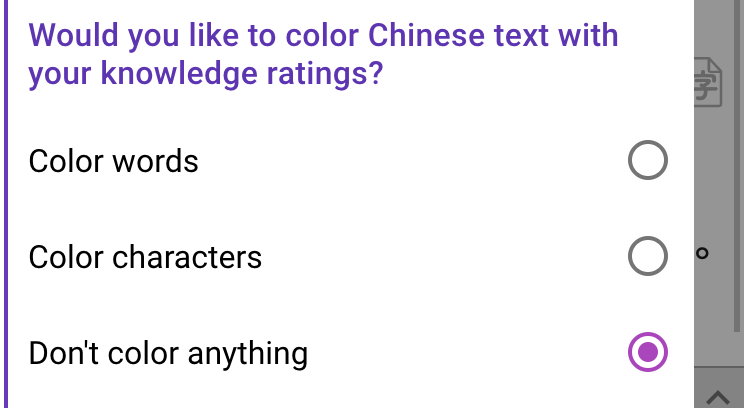Learning a new word generally seems to follow a typical progression. First you notice a new word, then after you’ve encountered it a few times, it starts to feel familiar and you decide that maybe it’s worth learning. You then more actively try and commit it to memory and perhaps try using it out in the wild a few times, and eventually it joins all the other words that you feel you’ve mastered.
Here’s what this process looks like:
At WordSwing, we make this process explicit. You can place any character or word into one of these three learn stages. These learn stages have the following interpretations:
- Discovered - This is a word that has entered your radar. You’ve seen or heard it a few times and it seems worth keeping your eye on.
- Learning - You’ve continued to encounter this word, and it seems like something you’d really like to know and something you would like to actively practice.
- Mastered - You feel confident that you know this word well.
These learn stage ratings have several purposes:
- WordSwing uses these to personalize your language practice. Specifically, WordSwing will include words in the learning stage much more frequently in the more drill-like activities, and WordSwing will assume that words in the mastered stage will be helpful context with which to learn other words.
- You can use these to keep track of what you’ve learned, what you’re learning, and where the gaps are.
- You can prune word lists based on your knowledge state ratings, say, to remove words you’ve already mastered. You can then use a tailored word list as the basis for practice in any of our review activities. We discuss pruning word lists here and here.
While practicing on WordSwing, you’ll have opportunities to tune what learn stage each word occupies. Tap the brain icon in the dock at the bottom to change your learn stage rating of the word.

You can make it easy to see your learn stage ratings as you read text on WordSwing by enabling either coloring of words or individual characters in the settings (in the app’s menu):

Once you’ve turned on coloring and provided ratings to many of the words in a text adventure game, it might look like this. This color coding helps you more easily spot words that are new as well as know which words you should already recognize or have encountered before:

So, come over to WordSwing, and start tracking your knowledge of Chinese and reaping the benefits of personalized practice!